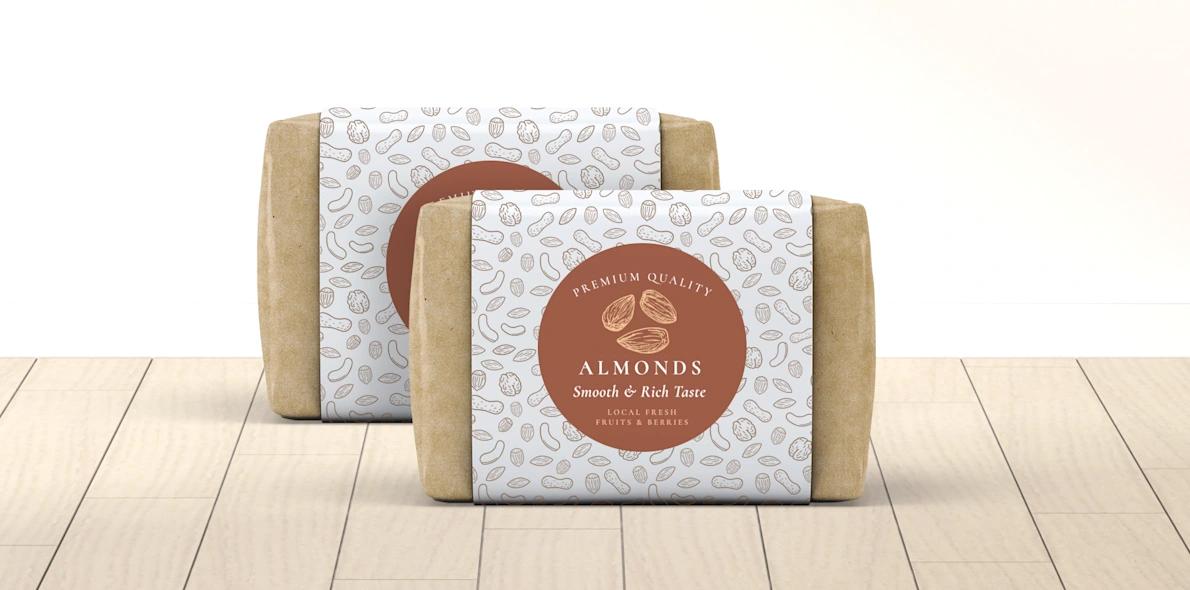Packaging has always played a good role in how people store, protect, and present products. However, sleeve packaging, which is commonly used today for sliding boxes or encasing items for added protection and branding, was not around 200 years ago.
People had different methods of packaging to keep items safe, transportable, and even attractive.
Cloth Wrapping
One of the most common forms of packaging hundreds of years ago was simply wrapping items in cloth. Cloth was readily available, easy to reuse, and offered a soft layer of protection.
People would often use cotton, linen, or wool fabrics to wrap and protect items, especially delicate goods like ceramics, glass, or foods. Cloth was also practical for travelers or merchants, who could easily wrap and unwrap their products without needing any complex materials.
For those with more valuable goods, the cloth might even be decorated or embroidered, giving it a more elegant appearance. This added both functional protection and an aesthetic touch, similar to how we use sleeve packaging today for branding purposes.
Wooden Boxes and Crates
Wooden boxes and crates were commonly used for heavy-duty packaging. These containers were especially popular for transporting goods over long distances, as they provided sturdy protection against bumps and rough handling.
Unlike sleeve packaging, which mainly serves as an outer cover, wooden boxes could completely encase an item, keeping it safe from dust, moisture, and other environmental factors.
Craftsmen would often custom-make wooden boxes for specific items, such as fine china, glassware, or delicate instruments, to ensure a secure fit. Wooden boxes were frequently reused and sometimes passed down through generations, making them an early example of sustainable packaging.
Paper Wrapping
While mass produced paper was not as common in the early 1800s, people still used hand made paper or parchment for wrapping smaller, valuable items.
Paper was useful because it was lightweight and could be folded to fit the shape of almost any item, from books to dried goods. Merchants, especially in marketplaces, used paper wrapping to protect their products during sales and transportation.
Though paper did not offer the same structural strength as wooden boxes or crates, it provided a layer of dust protection and was easy to dispose of or reuse. This was a practical option for those who needed something quick, cheap, and functional.
Compared to today’s sleeve packaging, paper offered a simpler form of coverage without the durability, but it was a practical solution for its time.
Animal Skins and Leather
Leather and animal skins were popular materials for packaging items, especially in ancient cultures where natural resources were highly valued and used to their fullest.
Leather is naturally durable, water-resistant, and tough, making it ideal for protecting valuable goods or items that need extra protection, like food, medicine, or fragile tools.
Hunters and craftsmen would often use leather pouches to carry small tools or essentials. Leather could also be crafted into more complex shapes, like bags or cases, which provided even greater protection.
Although more expensive and labor intensive to produce, leather offered a level of sophistication and protection that many people valued, especially for personal belongings or important items.
Metal Tins and Containers
Metals like tin and iron were also used for packaging in the 1800s, particularly for foods, spices, and other small goods that needed protection from moisture and air.
Metal tins were durable and could withstand rough handling, making them perfect for items that needed to be transported over long distances. Metal containers were often embossed or stamped with logos or designs, making them visually appealing as well as practical.
This was one of the earliest forms of branded packaging, as merchants and manufacturers could put their mark on these containers. Although metal tins were not as common as other materials, they offered superior protection and were highly valued for their durability.
Wool and Natural Fiber Wraps
In areas where wool was abundant, people used it as a packaging material for delicate items. Wool provided padding and insulation, which made it ideal for protecting fragile goods from shocks and extreme temperatures.
Natural fibers like jute, hemp, and flax were also woven into bags and used for packaging grains, seeds, and other bulk goods. Wool and fiber wraps were eco-friendly and biodegradable, which made them a practical option for people who valued natural and sustainable materials.
Even though they lacked the structure of rigid boxes or sleeves, these materials were effective in keeping items safe and were a common choice in rural and agricultural communities.
Decorative Wooden Chests
For special occasions or high value goods, decorative wooden chests were used to present and protect items. These chests, often beautifully carved or painted, served both as packaging and as keepsakes.
They were frequently used for items like jewelry, coins, or family heirlooms, and were passed down through generations. In many ways, these chests provided the same sense of luxury and value that modern sleeve packaging does for premium products.
They represented the craftsmanship and skill of the maker, enhancing the value of the items inside.
Two hundred years ago, people relied on a variety of natural, handcrafted materials to package their goods. Cloth, wood, leather, clay, glass, and wicker were some of the most popular materials, each chosen for its unique properties and practicality.
Discover the latest news and updates on LET MAGAZINE Best Regards!”



